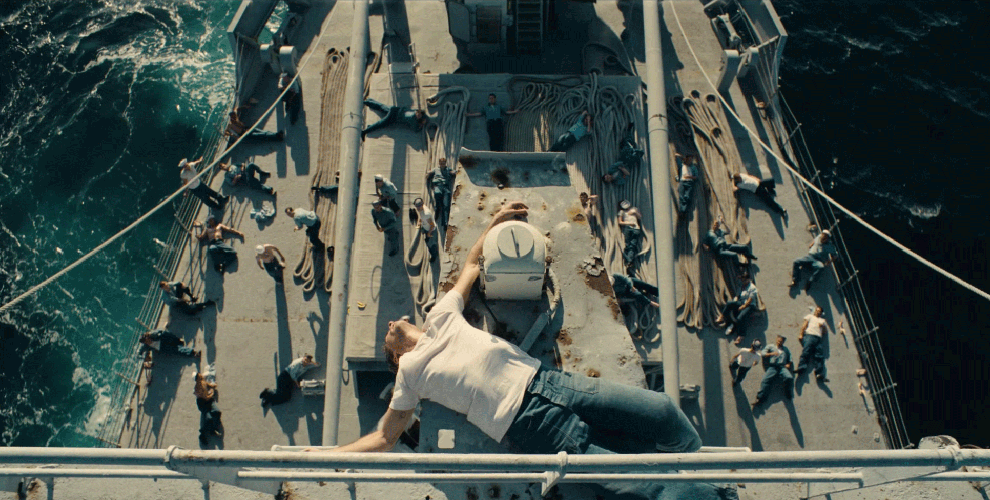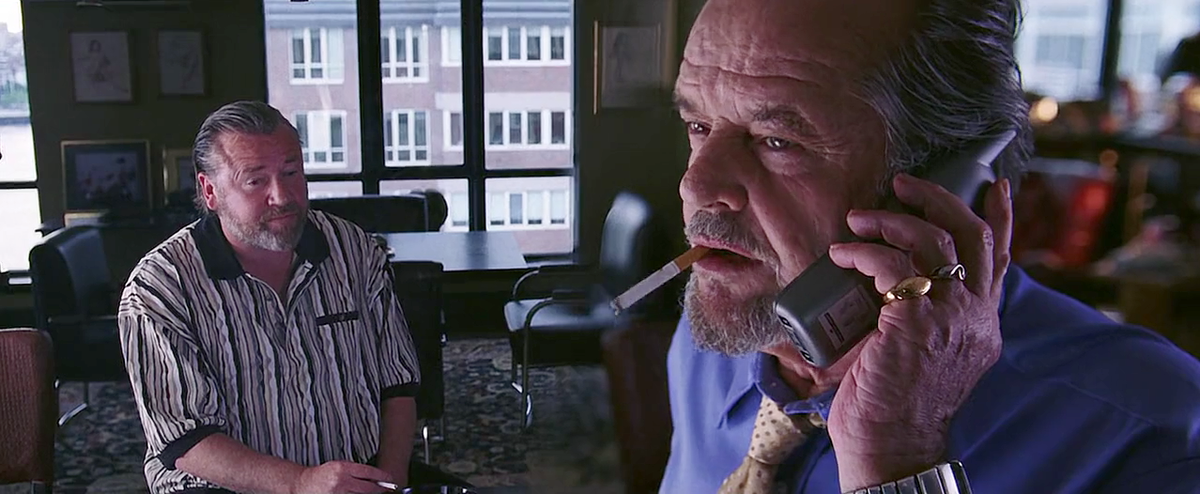
Note: This was originally written by yours truly for IndieWire
The inclusion of Raoul Coutard has not been removed despite his recent death. It's a travesty that he never won an Oscar, but, then again, what exactly is the point of winning an Oscar ? Every cinephile knows that Roger Deakins, a legendary cinematographer, who finally won in 2017, was nominated 13 times before finally winning.
Sadly, Deakins was not the only legendary cinematographer to have not won an Oscar — some haven’t even gotten nominated in their lifetime — which is why we narrowed these surprising snubs down to a list of 11 cinematographers who are still alive, but have never won. The late great Gordon Willis, who sadly passed away recently, never got his due and was instead awarded an honorary Oscar not too long before his passing away. Douglas Slocombe, who passed away just yesterday, was also nominated for three Oscars, though he never picked up a little gold man of his own.
Roger Deakins
This legendary cinematic figure will eventually win an Oscar, right? After 13 (!!) nominations, Deakins is still winless. Chances seem high that he’ll lose out this year to Emanuel Lubezki, who basically gave us one of the greatest photographed movies of the 21st century with "The Revenant." However, Deakins’ work, although less showy than Chivo’s, is far more difficult to achieve in its subtle, more nuanced manipulations of color. He’s a total pro, warranting inclusion on every "Greatest Cinematographers of All-Time" list he shows up on (and will show up on in the future).
Known For: "Barton Fink," ""Fargo," "The Big Lebowski," "O Brother Where Art Thou," "The Man Who Wasn’t There," "No Country For Old Men," "A Serious Man," "True Grit," "Skyfall," "Sicario," "The Shawshank Redemption," "Kundun."
Nominations: 13
EDIT: Finally won in 2017 for “Blade Runner 2049”

Michael Ballhaus
Michael Ballhaus’ work on Rainer Werner Fassbinder’s "Along" is enough to get him on this list — really, any of the 16 films they worked on should guarantee him a spot here — however, the main reason why Ballhaus has become such a legend is the work he created with Martin Scorsese during the second half of his career. He became well known for his 360ᵒ tracking shots and used it to its greatest effect in 1990 with Scorsese’s classic "Goodfellas." How he did not win for that film is still dumbfounding, especially considering that Dean Semler’s sub-par work in "Dances With Wolves" was rewarded instead. Although still technically "active," Ballhaus recently announced that he was suffering from glaucoma and was slowly losing his eyesight. For someone who is so visual, it’s heartbreaking news and it unfortunately seems to be the end of a legendary career.
Known For: "After Hours," "Broadcast News," "The Last Temptation of Christ," "The Fabulous Baker Boys," "Goodfellas," "The Age of Innocence," "Quiz Show," "The Departed."
Oscar Nominations: 3

Rodrigo Prieto
Rodrigo Prieto is a modern-day photographer who deserves more recognition than he’s been given. He was Alejandro González Iñárritu’s go-to guy until he went the Chivo route. He also illuminated Martin Scorsese’s glossy "The Wolf of Wall Street" with all the gritty, sleazy glamour needed. Hailing from Mexico, he is just as responsible for the Mexican new-wave as any of the filmmakers involved. Don’t be fooled by his aesthetically pleasing lenses; there are a ton of subtleties lying underneath the style. Directors such as Spike Lee, Ang Lee, Pedro Almodóvar, Oliver Stone and Martin Scorsese have all called him up for their films. In fact, Scorsese’s latest "Silence" was shot by Prieto in Japan and might just be his shot at a second nomination.
Known For: "Amores Perros," "8 Mile," "The 25th Hour," "21 Grams," "Brokeback Mountain," "The Wolf of Wall Street," "Argo."
Oscar Nominations: 1
Christopher Doyle
Christopher Doyle’s career has been very interesting, to say the least. Sure, he’s won awards at Venice and Cannes, but this Australian-born cinematography wizard had a hell of a life even before that; he was herding cows in Israel, was an oil driller in India and even became a doctor in Chinese Medicine in Thailand. In the late ‘70s, he learned Mandarin and a few years later got a gig as cinematographer for the late great filmmaker Edward Yang’s "That Day on the Beach." His love for high saturation and splashes of color fills every frame he works on. He’s known as the go-to photographer for directing master Wong Kar-Wai’s greatest films, including "In the Mood for Love," quite possibly the greatest photographed film of the aughts. Their partnership has sadly come to a standstill with ill-tempered Doyle claiming their critically acclaimed film "2046" was "unnecessary in retrospect." Ouch.
Known For:"2046," "In the Mood for Love," "Hero," "Chungking Express," "Paranoid Park," "The Limits of Control," "Happy Together."
Oscar Nominations: 0

Michael Chapman
This is the guy who photographed "Raging Bull," enough said. You’re probably asking yourself, "How the hell did he not win that year?" Well, Geoffrey Unsworth won instead for "Tess." No disrespect to Mr. Unsworth and his fantastic photography for his Roman Polanski epic, but Chapman’s work in "Raging Bull" is legendary. His use of black-and-white might be the definitive post-color statement of the medium, and the way he shot those boxing matches was, pardon my pun, a knockout. Even if he hadn’t done "Raging Bull" it would still be an impressive career. Chapman has had a huge influence on modern-day filmmaking, and his work in the ’70s alone would be reason enough to award him the golden statuette. Now 80 years old, he hasn’t photographed a film in a decade.
Known For: "The Last Detail," "Taxi Driver," "The Last Waltz," "Raging Bull," "The Fugitive."
Oscar Nominations: 2

Raoul Coutard
The visual innovator of the French "Nouvelle Vague," Coutard has shot 75 films in his illustrious career. Now 91 years old, he will always be remembered as Jean-Luc Godard’s go-to guy, photographing practically all of JLG’s Nouvelle Vague work from 1959-1967. This meant lots of black-and-white films, and only a handful in color. During this era, he always insisted on using natural lighting for his work. Coutard’s inventive use of the hand-held camera was incredibly important in the advancement of filmmaking. In fact, his visionary work with the hand-held is just as innovative as Orson Welles’ extended use of deep focus in "Citizen Kane." One can’t also forget his post-Nouvelle Vague work with Costa-Gravas and his incendiary work with his masterpiece, "Z."
Known For: "Breathless," "Jules et Jim," "Contempt," "Bande à part," "Alphaville," "Z."
Oscar Nominations: 0

Robby Muller
If you’re associated with Lars von Trier’s movies, chances are you just won’t be the Academy’s cup of tea. This of course cannot erase the greatness of your work; in fact, in many instances, it enhances it and makes the films age like fine wine. Robby Muller’s work with von Trier is — of course — astonishing. So is his work in Jim Jarmusch’s best shot movie "Dead Man," which uses beautiful Western-infused black-and-white photography. It is, however, his work with Wim Wenders for which he will be forever known, including "The American Friend" and "Paris, Texas," the latter of which unforgettably went through the heart of the American landscape. Both films are polaroid snapshots of America, with the most beautiful use of green, a Muller staple that has reappeared in much of his work.
Known For: "The American Friend," "Paris, Texas," "Repo Man," "Breaking the Waves," "Dead Man," "Dancer in the Dark."
Oscar Nominations: 0

Darius Kohndji
This Tehran-born camera genius has worked with some of the greatest directors in the world. He was discovered when shooting a famous Nike ad with David Fincher, which landed him a job as cinematographer of "Seven," a film that some say shaped the way drama would be shot in the 21st century. Khondji used simple camera approaches for the film and was highly influenced by — of all things — the TV show "COPS," which inspired him to use tricks like a camera peering over a shoulder from the backseat. As seen in "Seven," Khondji is known for using composition to create a sense of tension and dread. One can also not forget his colorfully whimsical genius in Jean-Pierre Jeunet’s movies and Woody Allen’s European love letters, especially in "Midnight in Paris," where his use of warm colors and limited camera movements gave the film its infectious glow.
Known For: "Delicatessen," "The City of Lost Children," "Seven," "The Beach," "Midnight in Paris," "Amour."
Oscar Nominations: 1
Jeff Cronenweth
Although "Seven" is very much a "David Fincher" movie, his very recognizable visual palette really started when he hired Jeff Cronenweth as his cinematographer for "Fight Club." If the name sounds familiar, it’s because Jeff is the son of Jordan Cronenweth, one of the most famous of modern cinematographers, especially known for his work on "Blade Runner." Jeff Cronenweth has a unique, very identifiable style with dimly-lit, close-up, longshots which tend to show a very shallow depth of field. To take away Cronenweth from a Fincher film would be akin to Stanley Kubrick not having John Alcott for "A Clockwork Orange," "Barry Lyndon" or "The Shining": Unfathomable. Cronenweth’s work has resulted in two Oscar nominations, but no wins. As for his non-Fincher work, check out "One Hour Photo," in which Cronenweth worked with director Mark Romanek to create a visual masterpiece.
Known For:
"Fight Club," "One Hour Photo," "The Social Network," "The Girl With The Dragon Tattoo," "Gone Girl,"
Oscar Nominations: 2

Edward Lachman
A German Expressionism expert, Lachman is a master at what he does. He also has the distinction of being the last cinematographer Steven Soderbergh used in his film career, which seemed to have a profound influence on the filmmaker’s later films in which he handled photography himself. In those films, Soderbergh used Lachman’s clear and precise hand-held camera techniques from "The Limey" and "Erin Brockovich" to fashion up a style that would distinguish the latter part of his career. Lachman’s greatest achievement would come a couple of years later when he started a legendary partnership with filmmaker Todd Haynes. Their Douglas Sirk-influenced melodrama, "Far From Heaven," was an astonishing work of art, where Lachman’s German Expressionism background was on display with his use of light to depict the inner emotions of the characters; he made their emotions burst out on the screen using expressive color.
Known For: "The Virgin Suicides," "Erin Brockovich," "The Limey," "Far From Heaven," "I’m Not There," "Carol."
Oscar Nominations: 2

Tak Fujimoto
Tak Fujimoto was one of two cinematographers who shot Terrence Malick’s landmark 1973 film "Badlands." You’d think that would be his big break, but being the camera operator for “Star Wars: A New Hope" in 1977 was really what opened doors for him. He is also Jonathan Demme’s in-house cinematographer, with their relationship starting way back in 1974 with "Caged Heat." Fujimoto has no Oscar nominations, not even getting recognized for his astounding work in Demme’s 1991 masterpiece, "The Silence of the Lambs." He is known for his striking old-fashioned visuals using on-set lighting and not relying on post-production effects. Quite a distinctive approach, especially in 2016.
Known For: "Badlands," "The Sixth Sense," "The Silence of the Lambs," "Philadelphia."
Oscar Nominations: 0




